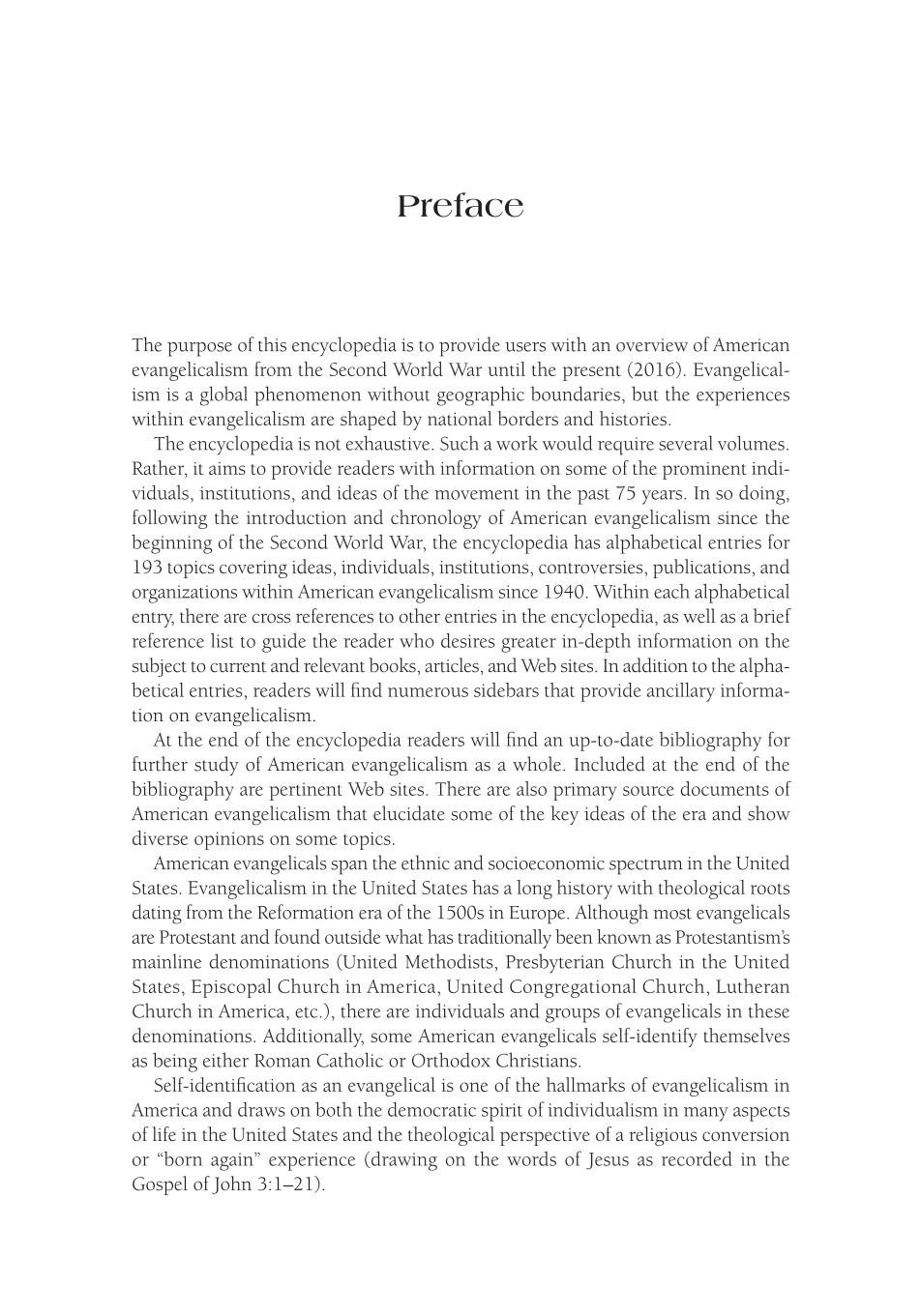Preface
The purpose of this encyclopedia is to provide users with an overview of American
evangelicalism from the Second World War until the present (2016). Evangelical-
ism is a global phenomenon without geographic boundaries, but the experiences
within evangelicalism are shaped by national borders and histories.
The encyclopedia is not exhaustive. Such a work would require several volumes.
Rather, it aims to provide readers with information on some of the prominent indi-
viduals, institutions, and ideas of the movement in the past 75 years. In so doing,
following the introduction and chronology of American evangelicalism since the
beginning of the Second World War, the encyclopedia has alphabetical entries for
193 topics covering ideas, individuals, institutions, controversies, publications, and
organizations within American evangelicalism since 1940. Within each alphabetical
entry, there are cross references to other entries in the encyclopedia, as well as a brief
reference list to guide the reader who desires greater in-depth information on the
subject to current and relevant books, articles, and Web sites. In addition to the alpha-
betical entries, readers will find numerous sidebars that provide ancillary informa-
tion on evangelicalism.
At the end of the encyclopedia readers will find an up-to-date bibliography for
further study of American evangelicalism as a whole. Included at the end of the
bibliography are pertinent Web sites. There are also primary source documents of
American evangelicalism that elucidate some of the key ideas of the era and show
diverse opinions on some topics.
American evangelicals span the ethnic and socioeconomic spectrum in the United
States. Evangelicalism in the United States has a long history with theological roots
dating from the Reformation era of the 1500s in Europe. Although most evangelicals
are Protestant and found outside what has traditionally been known as Protestantism’s
mainline denominations (United Methodists, Presbyterian Church in the United
States, Episcopal Church in America, United Congregational Church, Lutheran
Church in Amer i ca, etc.), there are individuals and groups of evangelicals in these
denominations. Additionally, some American evangelicals self-identify themselves
as being either Roman Catholic or Orthodox Christians.
Self-identification as an evangelical is one of the hallmarks of evangelicalism in
America and draws on both the democratic spirit of individualism in many aspects
of life in the United States and the theological perspective of a religious conversion
or “born again” experience (drawing on the words of Jesus as recorded in the
Gospel of John 3:1–21).

































































































































































































































































































































































































































































































































































